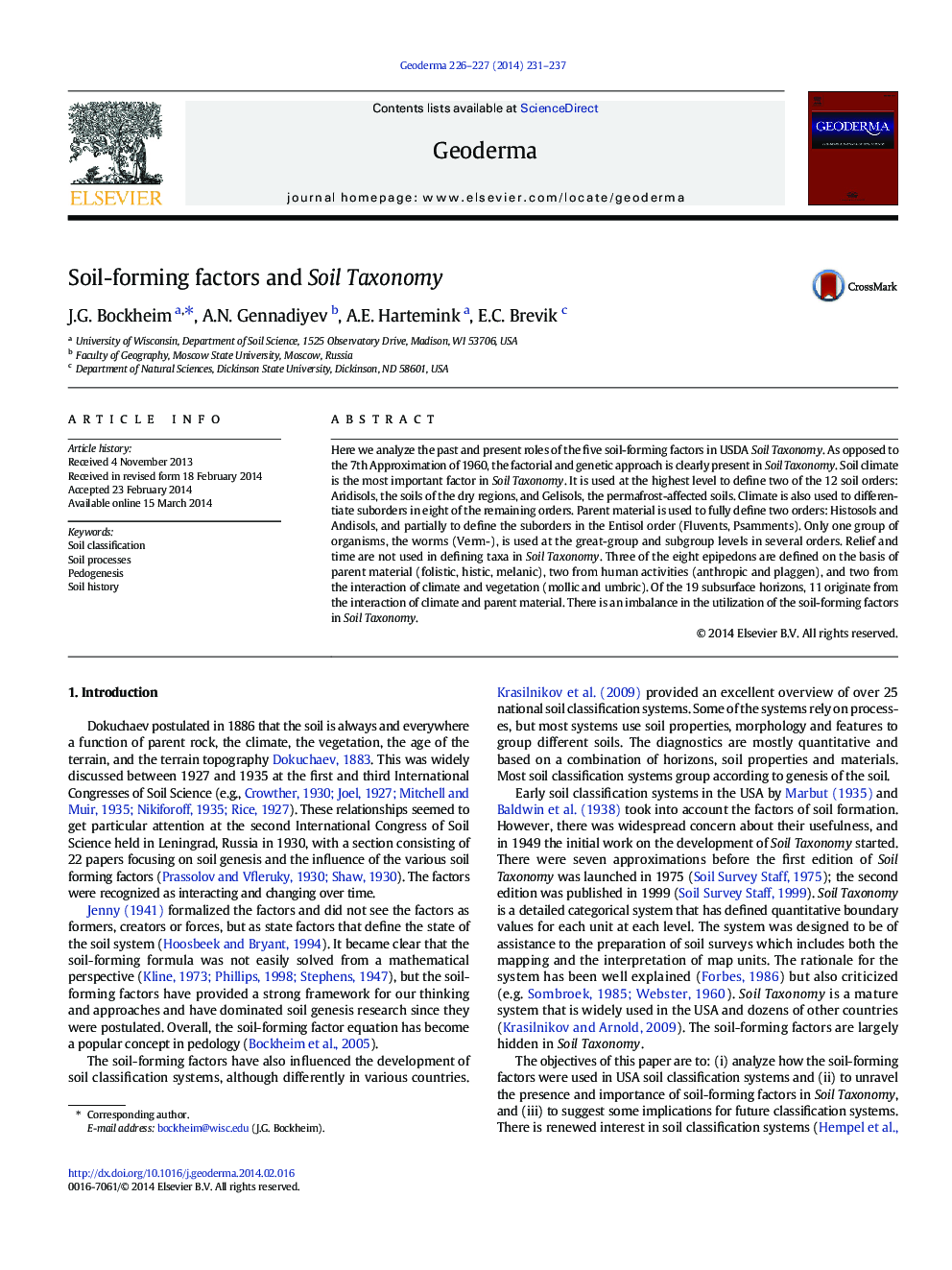| کد مقاله | کد نشریه | سال انتشار | مقاله انگلیسی | نسخه تمام متن |
|---|---|---|---|---|
| 6408873 | 1629472 | 2014 | 7 صفحه PDF | دانلود رایگان |
- Soil climate defines 2 orders and 8 suborders in Soil Taxonomy.
- Of 19 subsurface horizons, 11 reflect interaction of climate & parent material.
- Parent material fully defines 2 orders and partially defines 1 order.
- 3 of the 8 epipedons are defined on the basis of parent material.
Here we analyze the past and present roles of the five soil-forming factors in USDA Soil Taxonomy. As opposed to the 7th Approximation of 1960, the factorial and genetic approach is clearly present in Soil Taxonomy. Soil climate is the most important factor in Soil Taxonomy. It is used at the highest level to define two of the 12 soil orders: Aridisols, the soils of the dry regions, and Gelisols, the permafrost-affected soils. Climate is also used to differentiate suborders in eight of the remaining orders. Parent material is used to fully define two orders: Histosols and Andisols, and partially to define the suborders in the Entisol order (Fluvents, Psamments). Only one group of organisms, the worms (Verm-), is used at the great-group and subgroup levels in several orders. Relief and time are not used in defining taxa in Soil Taxonomy. Three of the eight epipedons are defined on the basis of parent material (folistic, histic, melanic), two from human activities (anthropic and plaggen), and two from the interaction of climate and vegetation (mollic and umbric). Of the 19 subsurface horizons, 11 originate from the interaction of climate and parent material. There is an imbalance in the utilization of the soil-forming factors in Soil Taxonomy.
Geoderma, Volume ___, Issue __, Pages ___-___ (date). Soil climate is used to the greatest extent defining taxa in Soil Taxonomy, followed by parent material.
Journal: Geoderma - Volumes 226â227, August 2014, Pages 231-237
